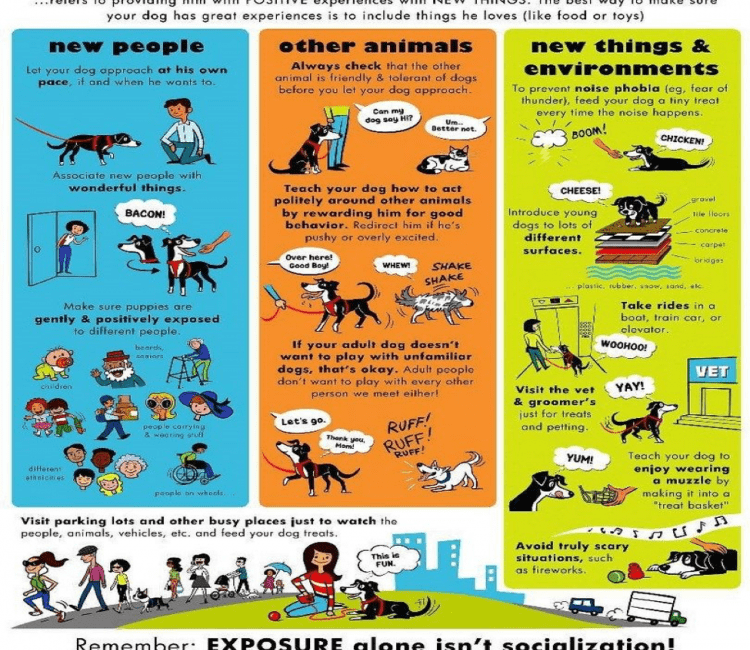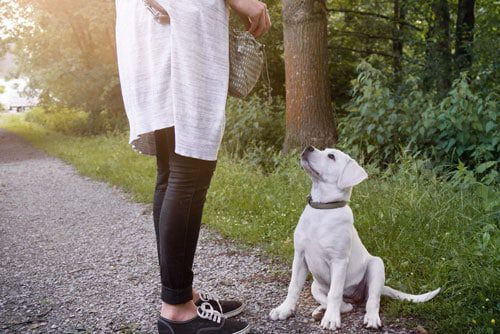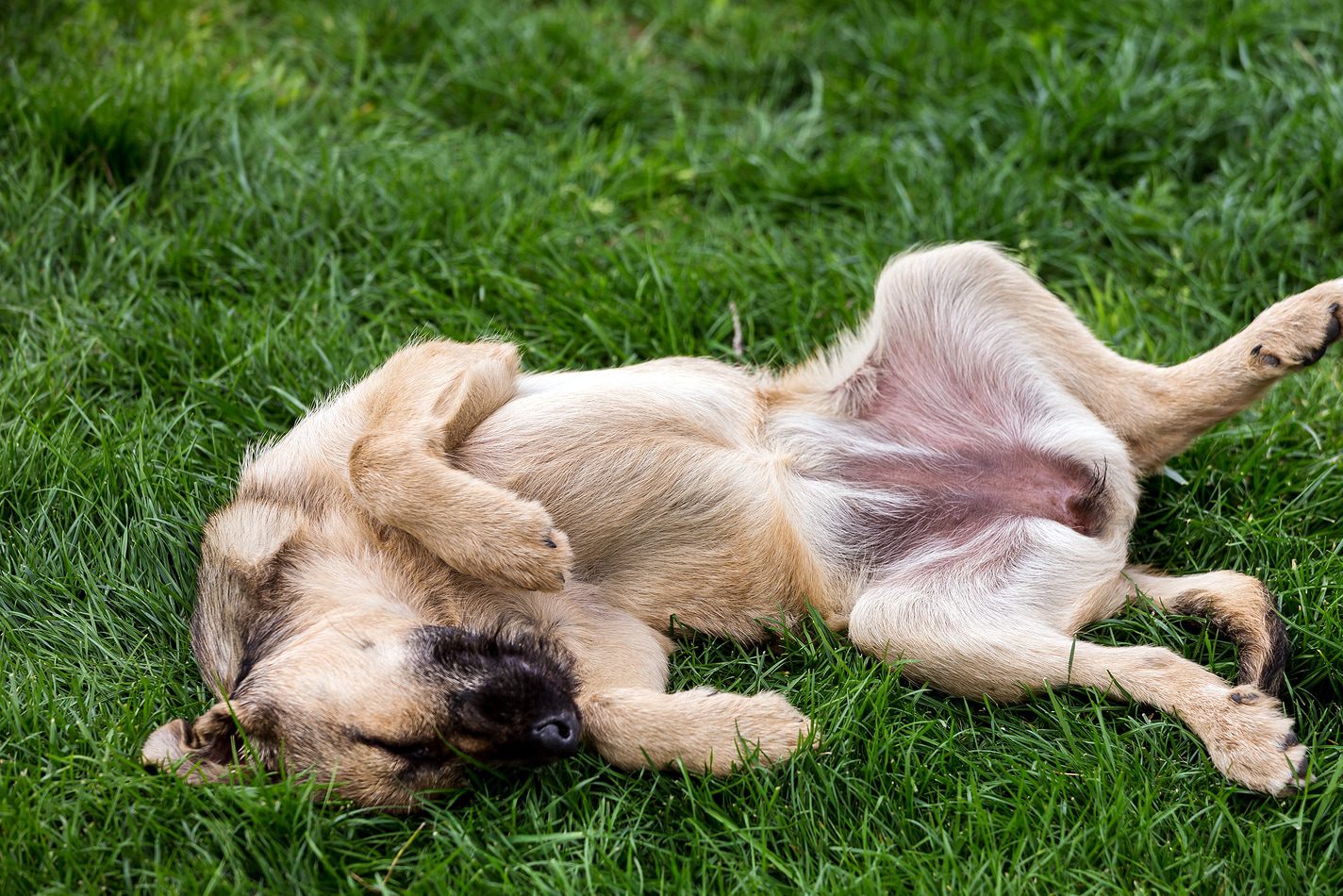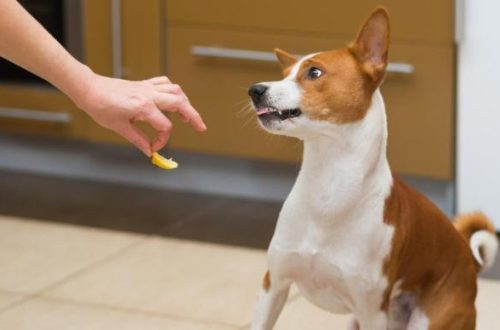
Taat latihan anak anjing: kumaha carana suksés
Congratulations! It’s time to take home a puppy! You know how important social interaction and good behavior are to a pet, so it’s in your best interest to start obedience training at home as soon as you have a puppy. Plus, training helps create a strong bond between your dog and your family. But where do you start?
Dina tulisan ieu anjeun bakal diajar:
- Naon latihan ta'at?
- What behavior of the puppy should be paid attention to;
- How to conduct obedience training at home;
- What is the help of a professional coach.
Daptar eusi
What is puppy obedience training?
Obedience training will help your pet understand its role in your family and in the world around it, and learn all the skills necessary to interact with dogs and with your family members or other people. Training is the first step to learning good behavior and avoiding bad. Dogs are usually trained with simple commands like “sit” and “next” and can later be taught more specific things like sitting quietly in the cage and not whining or begging and patiently waiting for the family to finish dinner.
The biggest benefit of home training is that you can tailor a program to suit your dog and your lifestyle. There is no such thing as a necessary or unnecessary skill to start with. The most important skill to teach your dog is the ability to listen and follow your commands.

Behavior to watch out for
It is important to understand what you want to avoid in order to instill good habits in your dog from the very beginning. Some pet owners want to prevent excessive barking, while others are concerned that their dog will chew on inedible items (dangerous houseplants or shoes). Other trouble spots that pet owners want to avoid in the future are digging, begging, stealing food, and defecation in the house.
Your puppy’s body language
As a rule, during a common family meal, it is especially difficult to teach a puppy obedience. You are the leader of the pack for him, devouring delicious food, and he looks at you with his huge puppy eyes that you can’t resist. At these moments, you need to control yourself and not feed him scraps from the table. This will help the puppy avoid excess weight and teach him that he will not achieve anything by begging. It is important that the whole family abide by this rule. Indulging in bad habits with even one family member can put all your efforts in raising a puppy down the drain.
Signs of aggression and submissiveness
If your puppy feels a surge of courage or aggression, he will try to get bigger by proudly holding his head, tail and ears up. He will also put forward his chest, and the hair on his neck and back will be reared. The puppy can growl and slowly wag its tail.
Submissive dogs, on the other hand, try to appear smaller and act like puppies. This is because an adult dog will “scold” a puppy, but will not attack him. Submissiveness of your dog will be expressed in the fact that he will fall sideways to the ground, tail flattening, but wagging it. She can also lick the face of a dominant dog or person and even ride on her back.
In any case, you need to help her get rid of this behavior. Either reducing aggression, or helping her feel more confident, and not be afraid of everyone and everything.
Ngagogog atawa ngarenghik
Of course, barking and whining can be a little annoying for you and your neighbors, but do not forget that this is a natural dog behavior and is part of his communication. Therefore, it is very important to teach your puppy when to bark and when not. After all, you want your dog to bark when it sees a stranger entering the house, not every time it sees a squirrel.
You shouldn’t encourage whining either. When a dog whines and you comfort him, you are encouraging the behavior and he will whine for you to come and comfort him. In this case, you need to ignore the puppy’s whining – yes, it will be very difficult, but you will be rewarded when the whining stops and you can finally sleep at night.
Finally, interacting with children and other animals is the main reason why you should start training your puppy. In order for you to invite guests to your place and take the dog “to people”, you must be sure that she will be able to communicate calmly, without posing a danger to her four-legged brethren and people of different ages. Usually, pets become very playful around children, therefore, teaching a pet to behave around children is an integral part of training, even if there are no children in your family. Your dog may run into children on a walk, and it is important that their sometimes unpredictable or cocky behavior does not upset or frighten the puppy.
Even if you only care about one or two issues, it is important to work on the behavior and socialization of the dog as a whole in home obedience training. If you have an idea of what you want to focus on, this is a good start. But don’t forget to address all kinds of problematic puppy behavior during training.
Homeschooling at the training school
Dogs are ready and eager to learn, so you need to start training as soon as you bring your puppy home. Every time you let him misbehave can set you back in puppy training, so get him off to a good start. Here are some tips for home obedience training your puppy.
Training should be short
The attention span of puppies is not very long, so training sessions should be short. Practice one command five times during training and after training, when possible. Your dog can only perform one action at a time, so focus on one skill and only move on to another when he has mastered it. You should also always end training on a positive note so that your pet looks forward to the next session.
Kudu konsisten
When you were in school, what helped you memorize the spelling of words and the multiplication table? Practice! Consistency is the foundation of your puppy’s training. Not only does he need to practice commands with you over and over again, but he also needs you to be consistent in your approach to training. This means constantly practicing commands, even if you are tired or busy. For example, you are cooking dinner and your dog is giving you a sign that he needs to go outside to do his business – turn off the stove and take him outside immediately. Use the same command words that you use when training simple commands such as “sit” or “beside” or “no”. This will help to remember that each word is associated with a specific command that you want to teach her.

Reinforce learned commands wherever you are
If you want your puppy to follow commands in a variety of places and situations, don’t limit training to one room or area in the yard. Reinforce commands at home, in the backyard, in the front garden, in the vicinity of your home, in the forest, park or any other place that you visit with your pet. There are many different distracting smells and sounds in new places, and you want the dog to still follow learned commands under various environmental conditions. Also, while it is good for one adult to act as pack leader, every member of the family should also train your dog. Part of training a puppy for obedience is just remembering where he is in the pack, so everyone should be involved. This will help your dog follow the commands of all people, not just one leader.
Reward your puppy
Dogs are highly motivated by rewards and rewards. Create pleasant associations in your puppy with following your commands with verbal encouragement or with a handful of healthy dog treats. Rewards not only make the training process much more interesting, but also give the dog an incentive. Just make sure that treats make up no more than ten percent of your dog’s daily calories so he doesn’t gain weight.
The joy of the owner is a great motivation for the dog, but try to find an opportunity to further encourage your pet. However, as soon as the dog begins to perform a certain command, wean it from the treats. This will give her confidence to carry out commands on her own and teach her that not every good deed will be rewarded.
Consider taking classes with professionals
Some pet owners choose to have their dog trained in social interaction after home training is over. Specialized puppy classes often focus on training dogs between the ages of eight to ten weeks and five months of age. In these sessions, they, along with other adult dogs and puppies, reinforce the good behavior skills that they have been taught at home. A puppy’s early interactions with people and other dogs will help him understand what is acceptable in the big world outside of your yard.
If you have any problems in home obedience training of a puppy or you just need a parting word from a more experienced person, a professional trainer will help you. He can work with your dog at your home or at his training base. Before hiring someone, check if this specialist has sufficient qualifications. Just talk to him about his training methods to make sure they match the way you would like to train your pet. If you need advice, ask your veterinarian or a friend who has recently given a puppy for training.
Finally, whether you’re training your pet at home on your own, taking him to class, or hiring an instructor, it’s important to be patient during this time. Your puppy will inevitably make mistakes or provoke accidents. At times like these, he needs your support. Correct his behavior or actions clearly and kindly and practice the commands you have taught him. Your dog is counting on you and is eager to learn.





